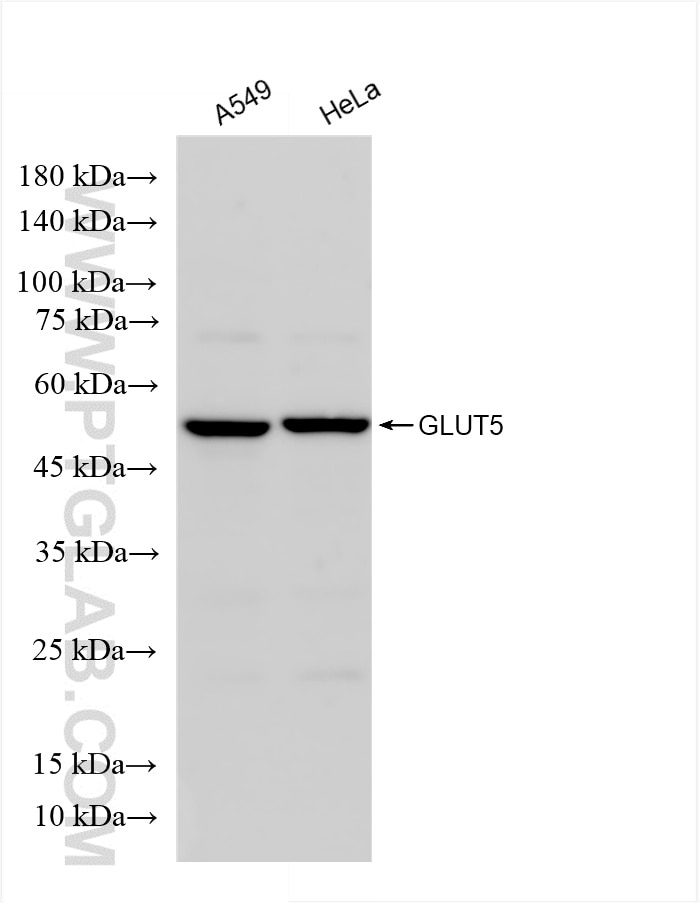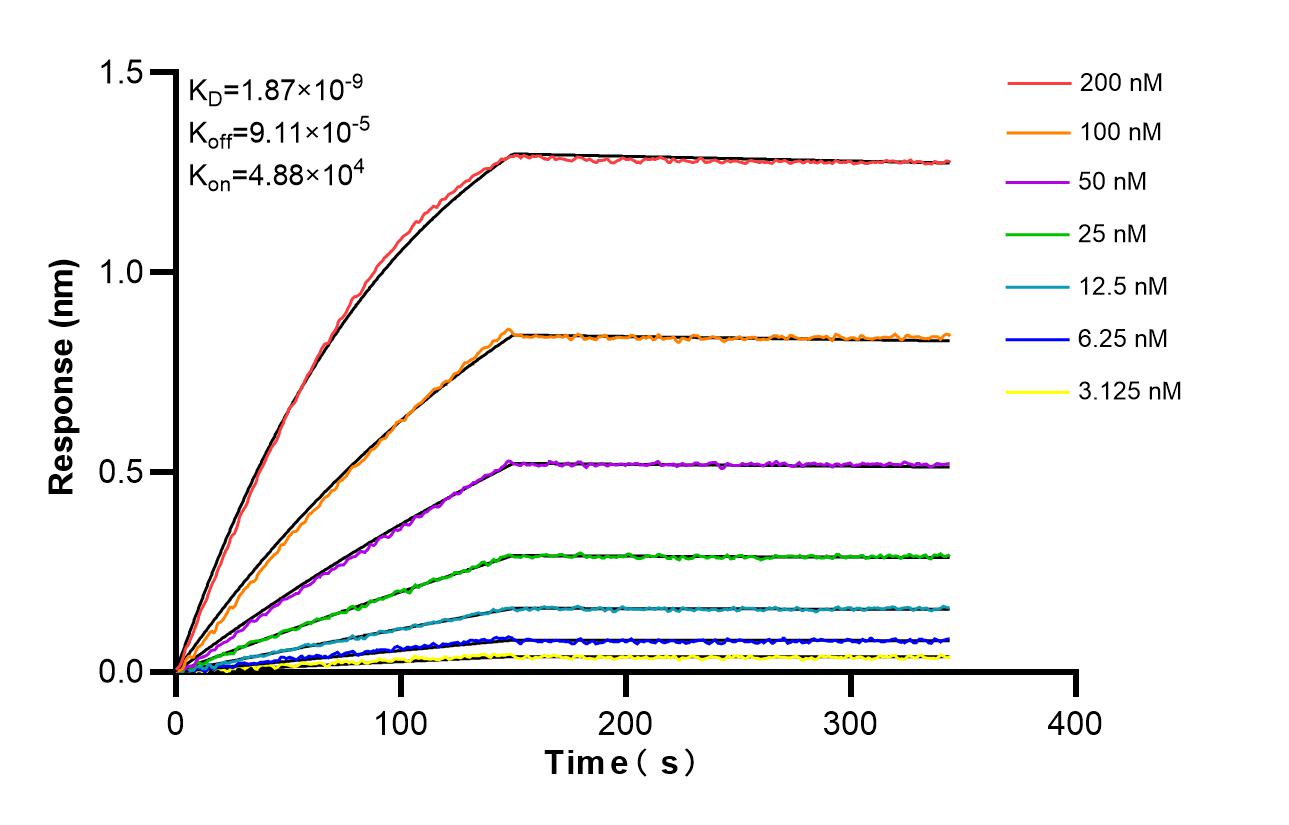Tested Applications
| Positive WB detected in | A549 cells, HeLa cells |
Recommended dilution
| Application | Dilution |
|---|---|
| Western Blot (WB) | WB : 1:2000-1:10000 |
| It is recommended that this reagent should be titrated in each testing system to obtain optimal results. | |
| Sample-dependent, Check data in validation data gallery. | |
Product Information
85878-1-RR targets GLUT5 in WB, ELISA applications and shows reactivity with human samples.
| Tested Reactivity | human |
| Host / Isotype | Rabbit / IgG |
| Class | Recombinant |
| Type | Antibody |
| Immunogen |
CatNo: Ag26091 Product name: Recombinant human SLC2A5 protein Source: e coli.-derived, PGEX-4T Tag: GST Domain: 357-399 aa of BC001820 Sequence: CVLTAALALQDTVSWMPYISIVCVISYVIGHALGPSPIPALLI Predict reactive species |
| Full Name | solute carrier family 2 (facilitated glucose/fructose transporter), member 5 |
| Calculated Molecular Weight | 55 kDa |
| Observed Molecular Weight | 55 kDa |
| GenBank Accession Number | BC001820 |
| Gene Symbol | GLUT5 |
| Gene ID (NCBI) | 6518 |
| Conjugate | Unconjugated |
| Form | Liquid |
| Purification Method | Protein A purification |
| UNIPROT ID | P22732 |
| Storage Buffer | PBS with 0.02% sodium azide and 50% glycerol, pH 7.3. |
| Storage Conditions | Store at -20°C. Stable for one year after shipment. Aliquoting is unnecessary for -20oC storage. 20ul sizes contain 0.1% BSA. |
Background Information
GLUT5, also known as SLC2A5, is a fructose transporter expressed on the apical border of enterocytes in the small intestine. GLUT5 allows for fructose to be transported from the intestinal lumen into the enterocyte by facilitated diffusion due to fructose's high concentration in the intestinal lumen (PMID: 12750891). GLUT5 is also expressed in skeletal muscle, testis, kidney, fat tissue (adipocytes), and brain (PMID: 9781312, 18398011).
Protocols
| Product Specific Protocols | |
|---|---|
| WB protocol for GLUT5 antibody 85878-1-RR | Download protocol |
| Standard Protocols | |
|---|---|
| Click here to view our Standard Protocols |






